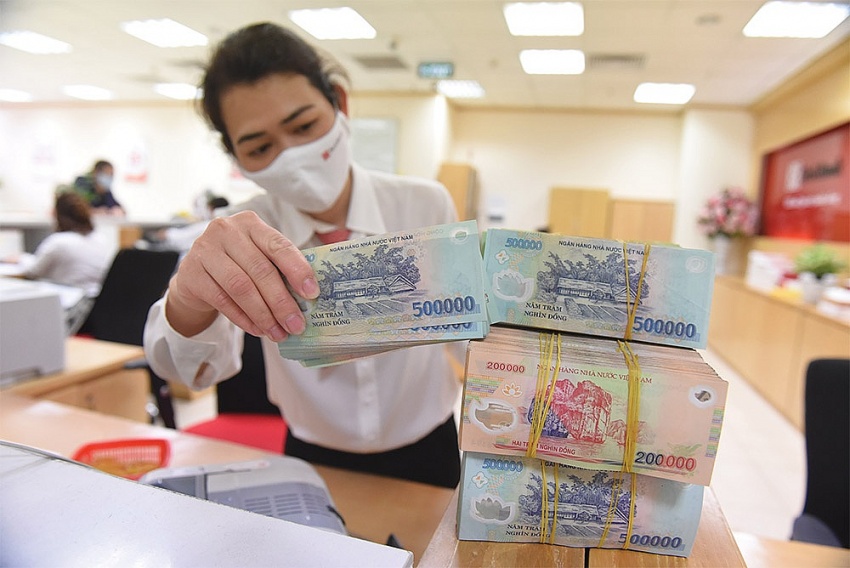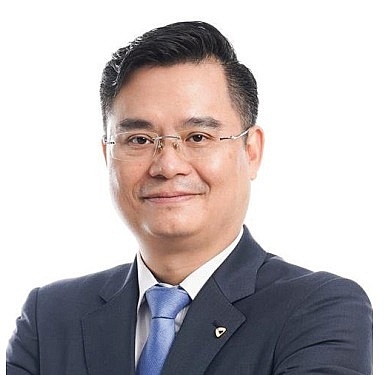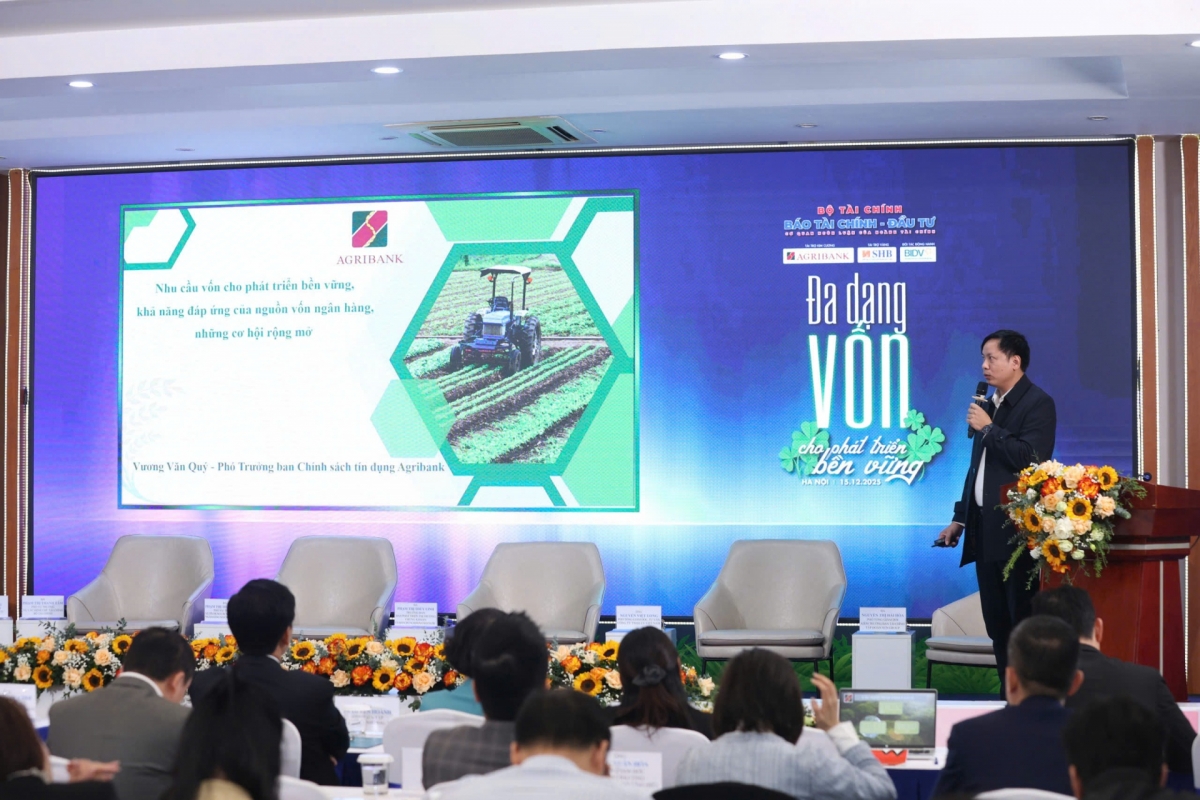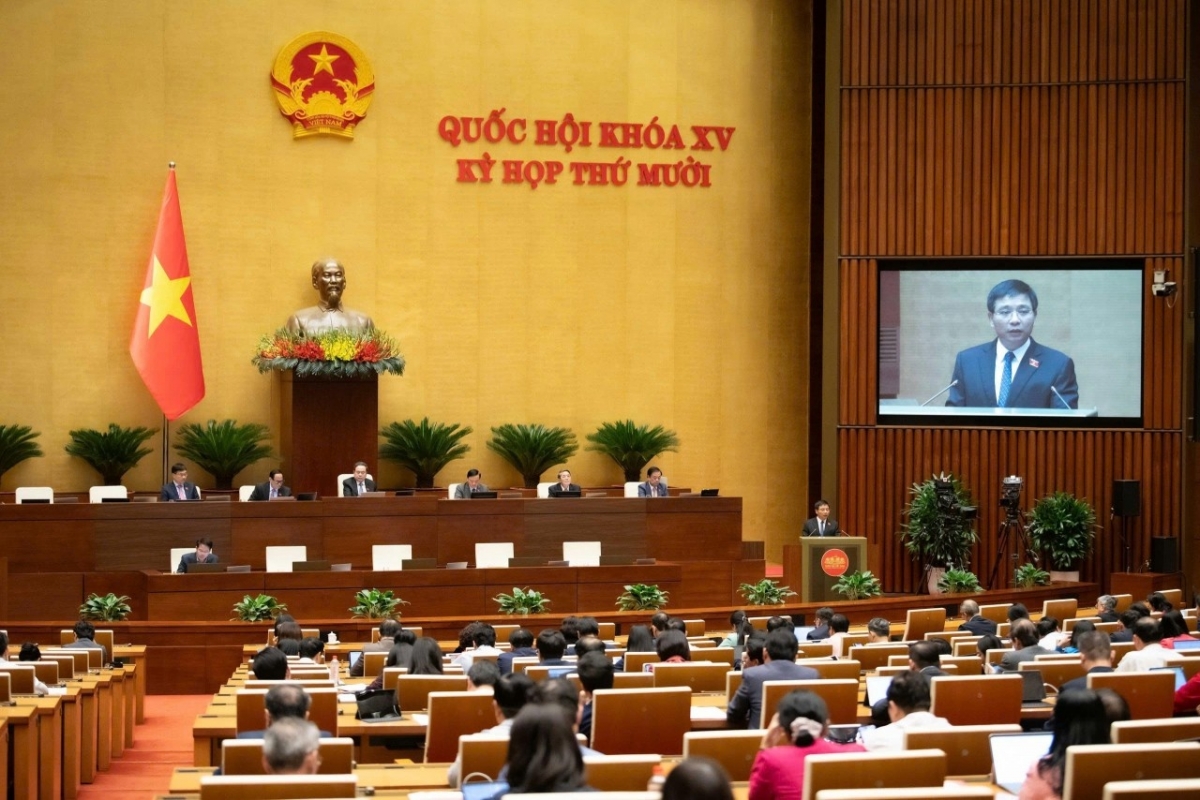INTERNATIONAL INVESTMENT
AND PORTAL
Overall weak credit demand in the market, with consumption growth still sluggish, is causing banks that do not meet their credit growth targets to have quotas proactively transferred by the State Bank of Vietnam (SBV) to banks with better capabilities.
According to the SBV, by the end of May, total national credit debt exceeded $583.33 billion, up 3.44 per cent compared to the end of 2023 and up 13.96 per cent compared to the same period in 2023.
 Credit growth motivation will continue to rely on public investment activities, photo Le Toan
Credit growth motivation will continue to rely on public investment activities, photo Le Toan
ABBank is the bank with the most severe negative credit growth in the entire system, with credit growth reaching over $3.33 billion, nearly 22 per cent lower than at the beginning of the year.
Likewise, VietBank’s credit debt is about $3.33 billion, down nearly 1.5 per cent compared to the beginning of the year. The list of banks with slightly reduced credit growth includes Vietcombank, Agribank, TP Bank, Saigon Bank, and PGBank.
Le Hoai An, banking training and consulting expert at Integrated Financial Solutions Corporation (IFSS), told VIR that credit growth across the system continues to grow slowly, reaching only about 20 per cent of the annual growth target.
“The bottleneck in growth primarily stems from state-owned banks, where growth remains very cautious, with the lowest growth rates seen in Agribank and Vietcombank,” An said. “These two banks specialise in retail lending on a large scale, so their low growth rate is a significant concern.”
On the other hand, banks with strong credit growth include LP Bank with around $12.71 billion, achieving nearly 11 per cent growth from the beginning of the year. NCB Bank reached nearly $2.54 billion with a growth rate of over 10 per cent. Techcombank also achieved nearly 10 per cent growth with a balance of approximately $24.58 billion.
Tran Minh Binh, chairman of VietinBank, said, “The bank’s credit debt by mid-June exceeded $64.17 billion, up about 5 per cent from the beginning of the year. It is expected that by the end of June, credit growth could reach 5.5-6 per cent.”
In general, the overall market’s credit demand remains very weak as consumption growth is still sluggish, An from IFSS said. In the challenging economic context, consumers continue to tighten their belts and limit significant expenditures to avoid negatively impacting their family’s financial situation.
“This trend is likely to continue until the end of the year, so credit growth motivation will continue to rely on public investment activities by the government as projects are accelerated,” said An.
In the context of most banks adjusting their business targets cautiously, it is clear that banks have anticipated a year of prolonged challenging growth, and efficient internal management remains the top priority.
Regarding credit quota transfers, with a relatively low credit growth rate of nearly 2 per cent, reaching approximately $22.5 billion by mid-May, Luu Thi Thao, vice president of VPBank said that the bank is reviewing and continuing to introduce many digital products, simplifying personal loan procedures to increase customers’ access to capital.
“With the projected economic recovery, along with the bank’s proactive solutions, personal loans will grow strongly again in June. Additionally, VPBank continues to focus on the foreign direct investment segment, which is also a growth driver for the bank after partnering with SMBC,” Thao said.
Elsewhere, striving to boost credit growth in the remaining months of the year, PVcomBank will reduce costs to lower lending rates.
“Additionally, it will implement preferential loan packages, promote technology application, automate loan processes, and simplify disbursement procedures to help customers access capital more easily,” stated bank representative Nguyen Linh Chi.
Regarding solutions for the rest of the year, SBV Deputy Governor Dao Minh Tu said, “The SBV will continue to create stronger conditions for lowering interest rates based on cost reductions by commercial banks and stable interest rate management. This will maintain a stable interest rate environment to support businesses and individuals.”
Notably, the SBV will monitor, supervise, and evaluate banks that do not achieve their credit growth targets, and proactively transfer quotas to banks capable of better credit growth in the future, Tu added.
Nguyen Thanh Tung, CEO, Vietcombank

As of June 17, Vietcombank’s credit growth reached 2.4 per cent. The slow credit growth is attributed to the global economic situation and disruptions in the global supply chain, leading to a decline in global purchasing demand, which has impacted the credit demand of foreign investment customers, manufacturing, and export enterprises.
In terms of retail credit, the majority of the consumer loans are tied to real estate, which has faced numerous difficulties recently, and people’s incomes have been limited, making them hesitant to invest and spend.
Additionally, low credit growth is partially due to local regulatory hurdles. Vietcombank has signed many large credit commitments, but upon reaching local levels, it encounters difficulties in addressing sublicences such as fire safety permits. These factors are beyond the bank’s control. Given these circumstances, achieving this level of credit growth is a success for Vietcombank.
Looking ahead, Vietcombank and other state-owned commercial banks will lead in considering further reductions in lending rates. However, this will be extremely challenging given the rising pressure on deposit interest rates.
Le Ngoc Lam, CEO, BIDV

As of June 17, BIDV’s credit growth was 4.7 per cent, corresponding to an outstanding balance of $77.92 billion, up $3.38 billion compared to the end of 2023. Despite rapid growth at the end of last year, BIDV experienced negative credit growth in January and February and only began growing in May.
To boost growth, BIDV currently has 16 credit packages totalling $3.33-3.75 billion, with interest rates 0.5-2.5 percentage points lower than those for regular customers. Additionally, over nearly six months, the bank reduced profits by $145.83 million to support customers.
Despite improvements such as government and SBV support, economic recovery, increasing foreign investment, and low-interest rates boosting growth, credit is still facing many challenges. The bank is eager to lend but is hindered by weak capital absorption, resulting in slow credit growth.
The bank will continue to implement measures to encourage branches to actively grow credit, such as organising meetings between businesses and banks to identify and resolve issues, as well as continuing to implement credit packages and reduce interest rates.
Pham Toan Vuong, CEO, Agribank

As of the end of May, Agribank’s outstanding loans reached $65.42 billion, a 1.24 per cent increase. The forecast is to reach 2.5 per cent by the end of June and 8.5 per cent by year-end.
Some sectors like wholesale and retail grew by 5.1 per cent, manufacturing by 3.1 per cent, and electricity production by 2.8 per cent. The social housing programme approved 11 projects with nearly 40 customers, achieving the highest results among commercial banks.
Agribank launched 13 additional projects with an estimated outstanding loan amount of $2.08 billion. The agricultural and fisheries sector’s credit package increased from $208 million to $333 million, reaching $258 million by the end of May, with the initiative expected to conclude by the end of June. Although Agribank’s growth is low, given the nature of its credit and customer base, this is a positive result.
We will continue to implement solutions to promote safe and effective credit growth, focusing on credit for development-driving sectors, and continue to approach and invest in social housing as well as agricultural and rural projects.
By Hong Dung



















